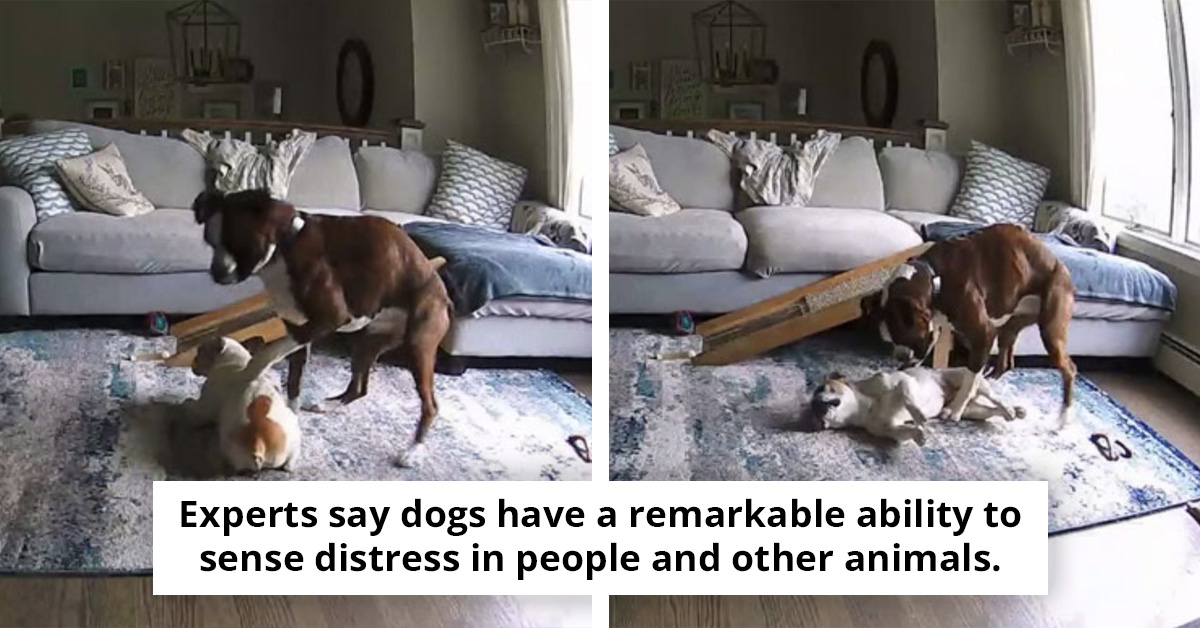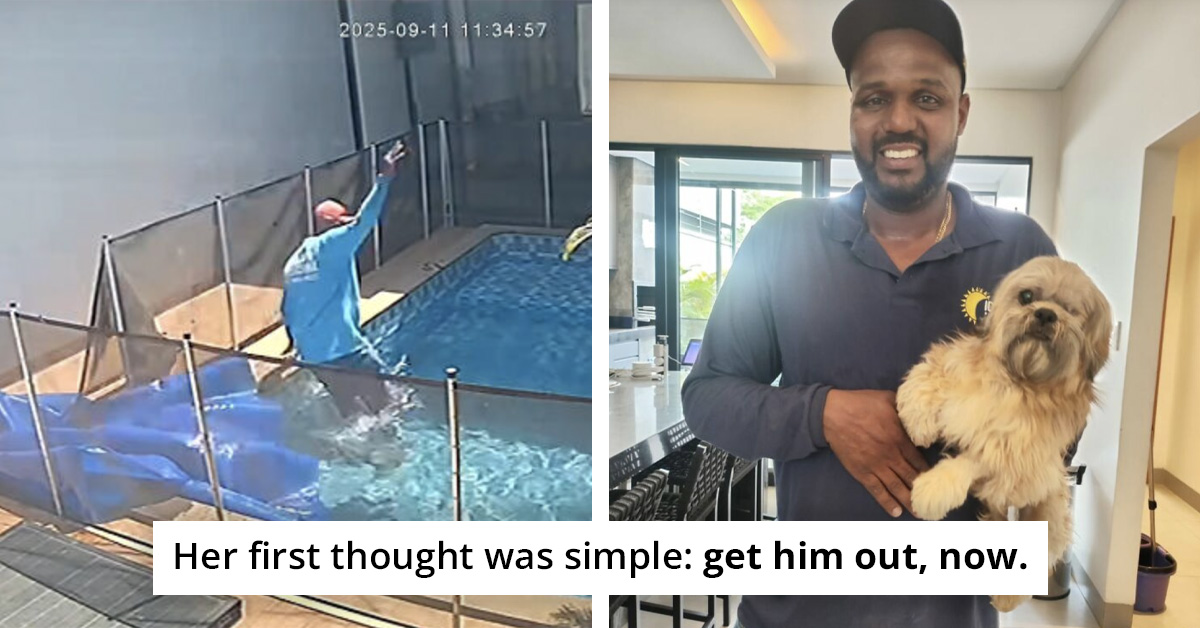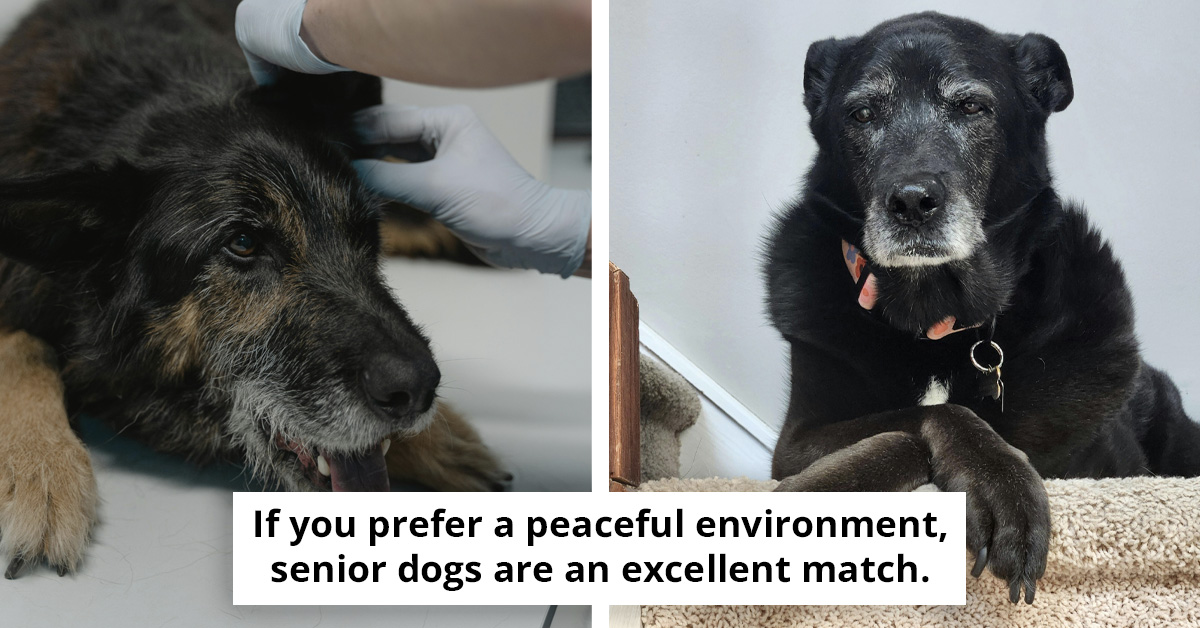Woman Buys a Car to Shelter Stray Cats
In many neighborhoods, stray cats often become part of the scenery—seen but rarely cared for. They roam the streets, nap under cars, and rely on scraps and luck to survive.
For some people, these animals fade into the background. But for others, like one woman in Brazil, ignoring them simply wasn’t an option. What started as a small act of kindness turned into something much bigger: a clever solution that gave three stray cats a real home.
In Bauru, a city in São Paulo, Aninha Forti had been looking after a trio of cats that hung around her condominium for years. Their names—Pititico, Frajolão, and Dr. Wagner—had become familiar to everyone who lived there.
They weren’t officially anyone’s pets, but they’d quietly made the area their territory. When the building administration decided to clear out common areas and banned residents from leaving items around the property, Aninha started to worry.
The cats had been living under the stairs and near parked cars, and now their last bit of shelter was about to disappear. She thought long and hard about what to do.
Adopting them wasn’t possible because she already had pets of her own. Building a shelter outside wasn’t allowed either. Then she came up with an idea that sounded strange at first but turned out to work perfectly.
Meet Pititico, Frajolão, and Dr. Wagner.
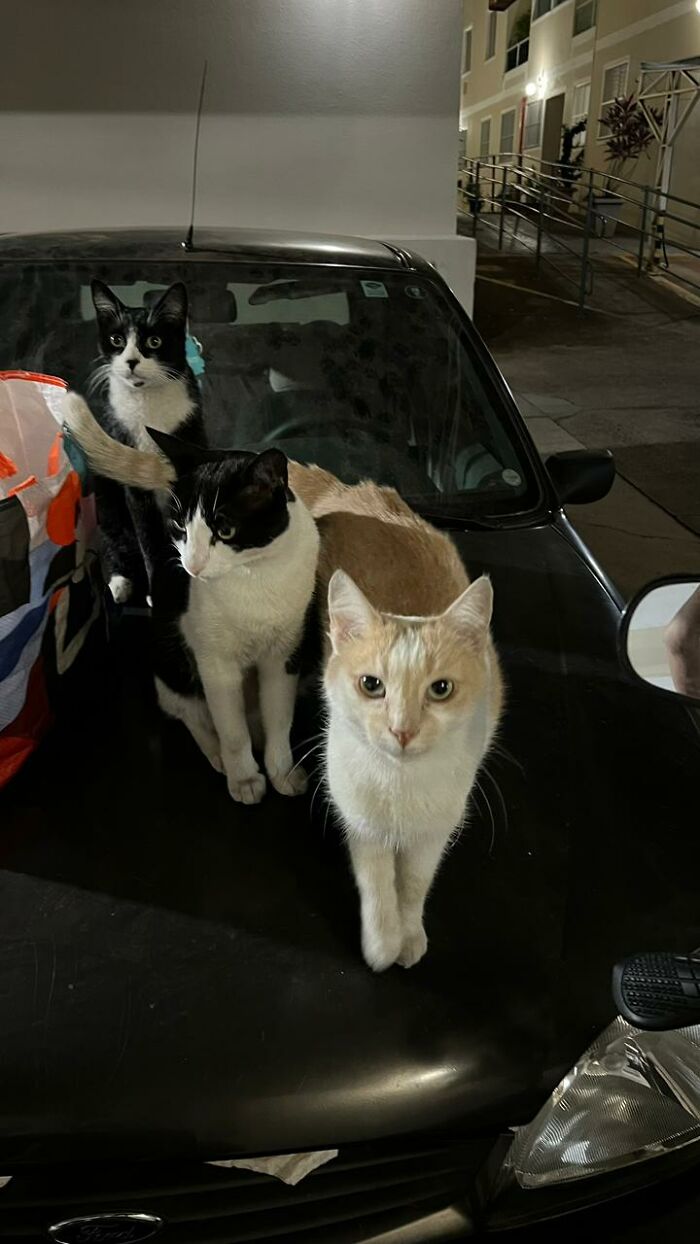
Three stray cats who spent years calling a condominium’s garden and lounge their home.

From Curbside to Cozy.

Innovative Solutions for Stray Cats
Dr. Julie Levy, a renowned veterinarian and co-founder of the nonprofit Neighborhood Cats, emphasizes the importance of creative solutions like this woman's car shelter in addressing the stray cat crisis.
Dr. Levy notes that while traditional shelters are effective, they often face regulatory challenges and community pushback. Creative ideas, such as using a vehicle for shelter, can provide immediate relief and safety for these vulnerable animals.
She advocates for community engagement and awareness to support these initiatives, suggesting that people can organize educational workshops to inform neighbors about caring for strays responsibly.
Roommates in Peace.
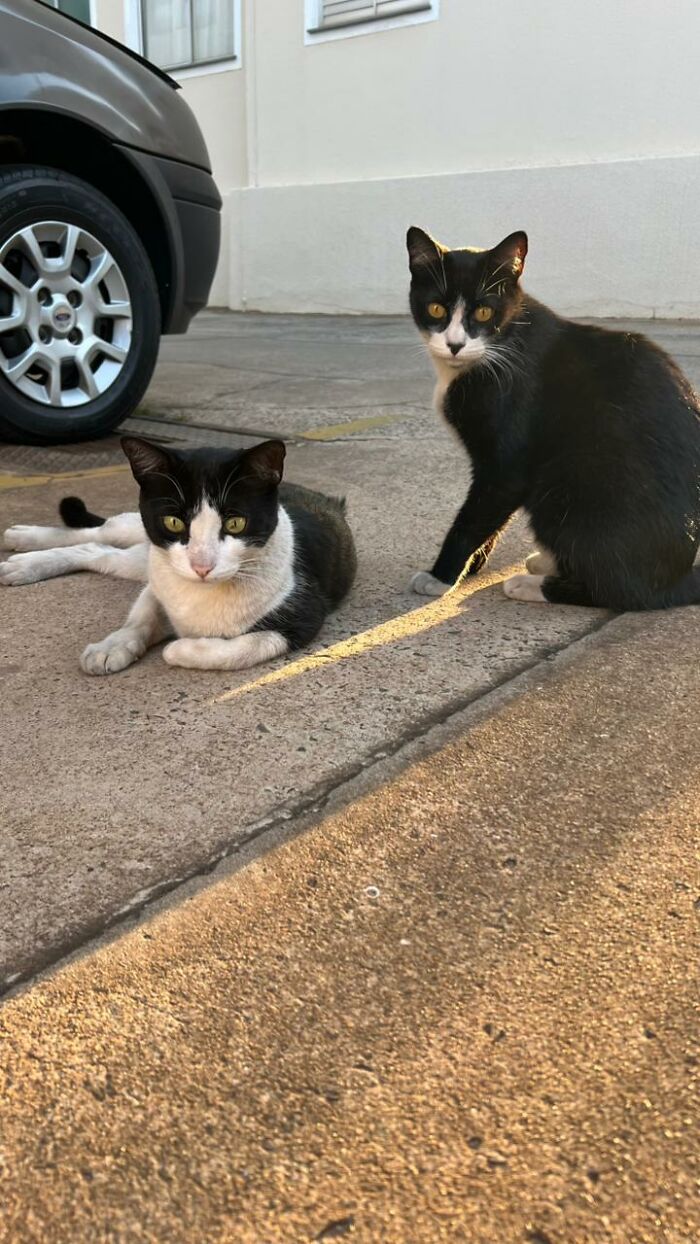
Aninha Forti with Her Furry Neighbors.

When New Rules Required Residents to Clear Out the Shared Spaces...
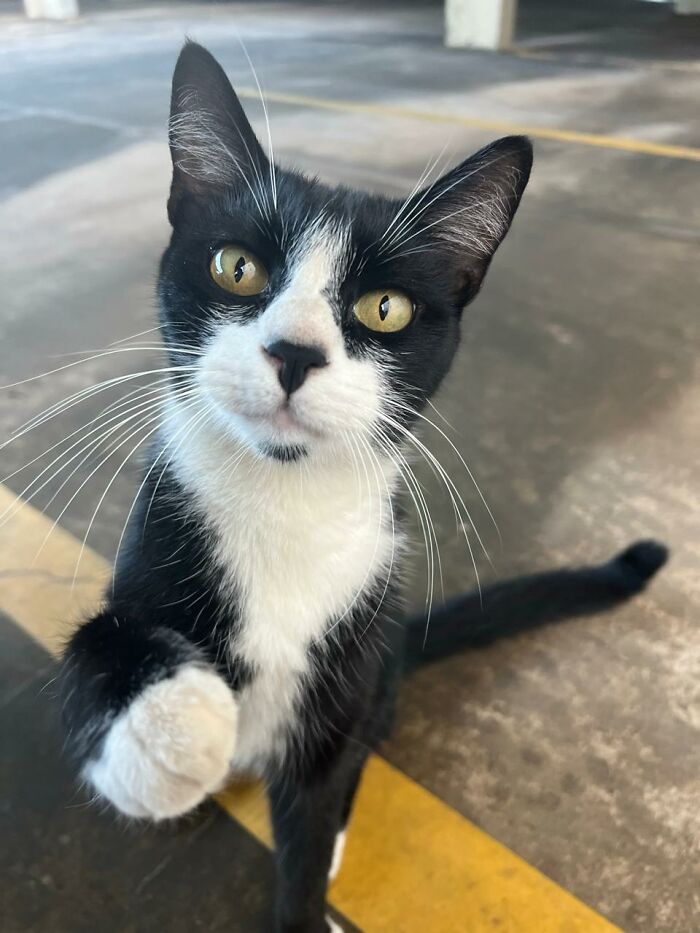
In urban areas, stray cats are often viewed as nuisances rather than part of a broader ecological system. According to Dr. David Jessup, a wildlife veterinarian, communities should recognize the ecological role these animals play.
He points out that feral cats help control rodent populations, which can reduce the need for harmful pesticides. However, responsible management is crucial, and Dr. Jessup recommends spaying and neutering to keep feral numbers in check while promoting community safety.
His insights underscore the need for a balanced approach that includes humane population control and public education.
The Cats Were Suddenly Left Without a Place to Stay.

In September 2025, she bought a small used car—not to drive, but to park inside the condo’s garage and turn it into a cozy home for her furry neighbors. She cleaned it up, filled it with blankets, food bowls, and toys, and left the windows slightly open so the cats could come and go freely. To everyone’s surprise, they quickly claimed it as their new territory.
“It was the best way I found to take care of them beyond just feeding them,” Aninha explained.
“They used to stay out in the open, and I was afraid something would happen to them. The car is like their house now. The condo rules say we can’t leave objects in the garage, but they don’t say anything about what’s inside a car. So I just worked around it. Inside the car, I can do whatever I want.”
New Residents Inspecting the Backseat Real Estate.
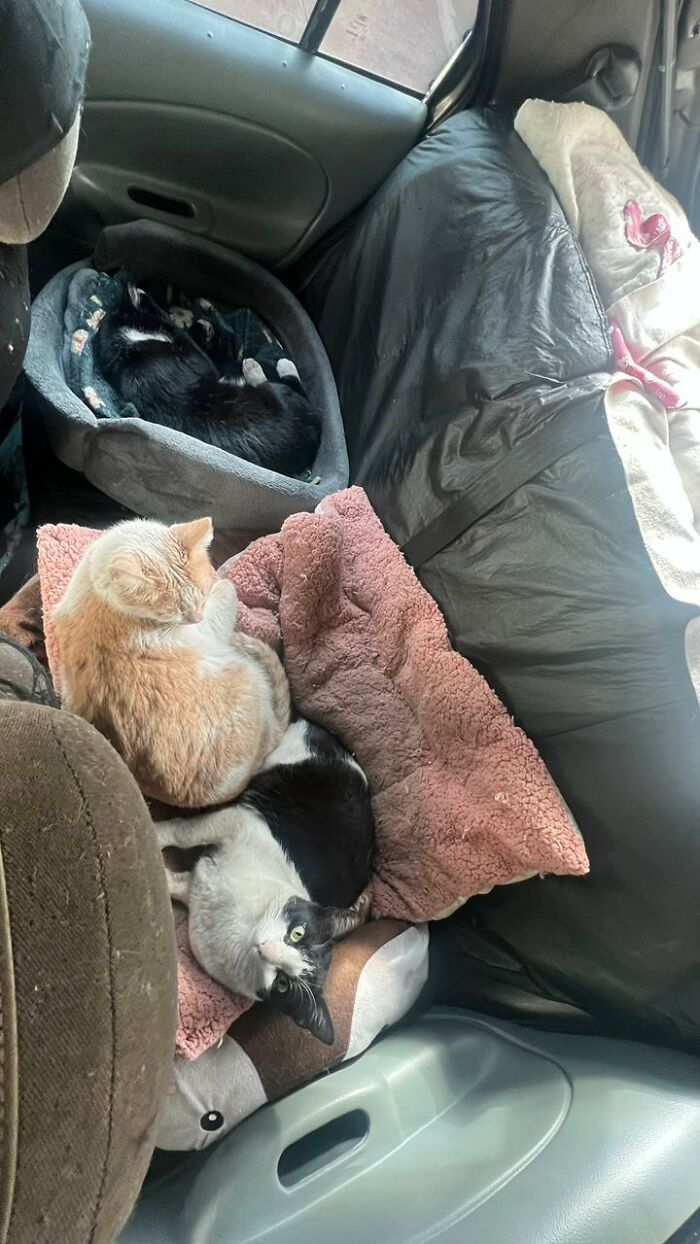
At first, not everyone was thrilled. The condo’s administration wasn’t exactly enthusiastic about the idea of a parked “cat house.” But since Aninha wasn’t technically breaking any rules, there wasn’t much they could do. As time passed, the residents began to warm up to the cats.
“Little by little, the cats won over most of the people here,” she said. “A few don’t like them, but they just keep their distance, and the cats stay away from them too. Most of the neighbors enjoy seeing them around now.”
Fully Furnished with Premium Feline Comfort in Mind.

Community Engagement Strategies
Experts suggest that community involvement is vital in addressing the welfare of stray cats. Dr. Karen Becker, a veterinarian and animal advocate, encourages residents to form local groups aimed at monitoring and caring for strays.
Dr. Becker indicates that collective action can lead to more sustainable solutions, such as TNR (Trap-Neuter-Return) programs, which help manage stray cat populations humanely. By building a network of volunteers, communities can pool resources for veterinary care, food distribution, and shelter construction.
Engaging local businesses for sponsorship can also amplify efforts and foster community spirit.
When Your Home Is a Car.

The three cats each have their own personality. Pititico, the small tabby with a dark nose, is curious but cautious. Frajolão is the bold one, always the first to climb inside the car.
Dr. Wagner, the biggest of the three, prefers lounging on the hood in the morning sun. Together, they’ve become local celebrities. People stop to take photos, leave treats, and share updates online.
This Woman Provided Them with a Home.

Obviously Very Comfortable.
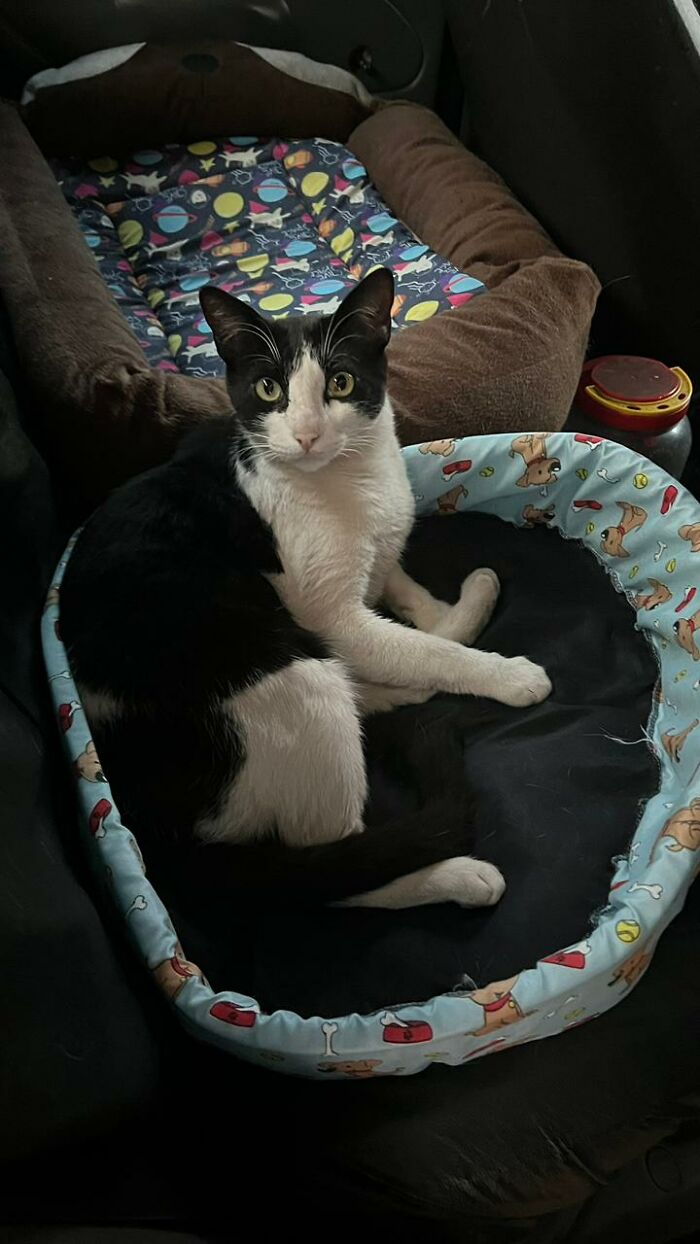
According to a study from the American Society for the Prevention of Cruelty to Animals (ASPCA), the human-animal bond is strong and can positively affect mental health. The act of caring for strays can be therapeutic for individuals suffering from loneliness or depression.
Experts recommend creating volunteer opportunities for local residents to engage with stray animals, which can foster a sense of purpose and community.
Incorporating educational programs on animal care in schools can also cultivate empathy and responsibility in younger generations, helping to create a more compassionate community.
Pititico.
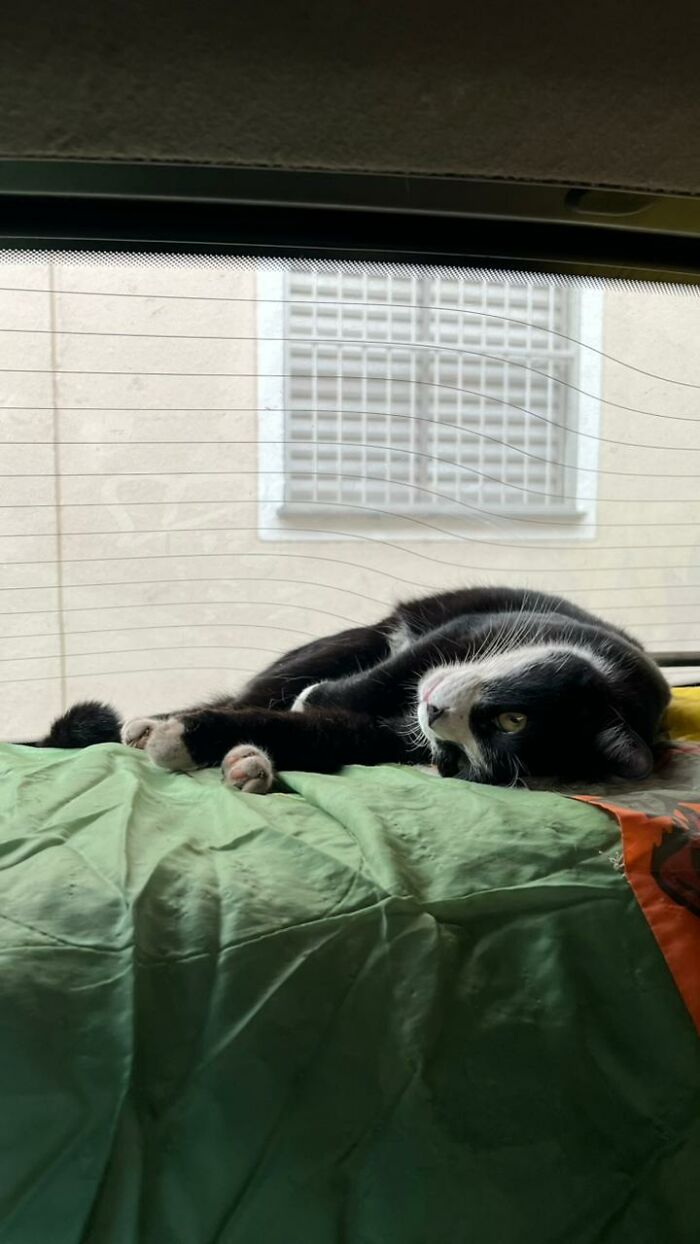
The Vehicle Is a Safe Home for the Cats.
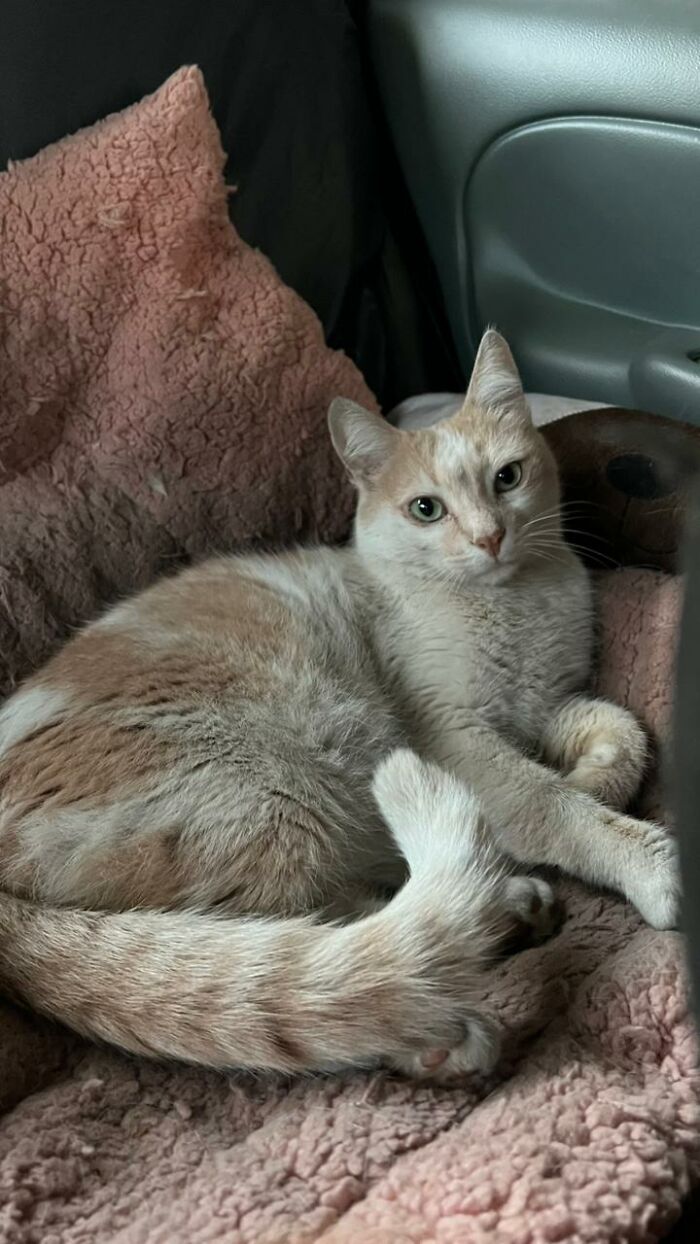
Driver Ready for Takeoff.
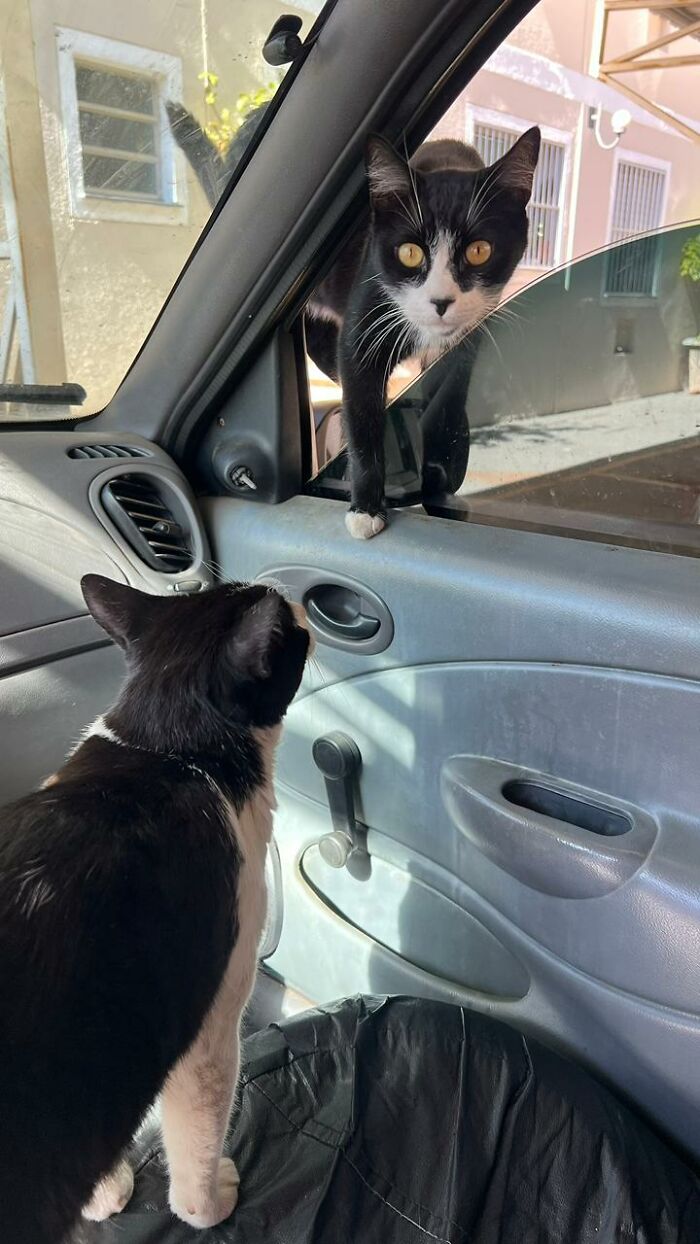
Practical Steps for Stray Advocacy
To maximize the positive impact on stray cats, experts suggest implementing a few practical steps. Dr. John Bradshaw, a feline behaviorist, emphasizes the importance of creating safe outdoor environments while minimizing potential conflicts with neighbors.
He advises installing feeding stations in discreet locations and providing simple shelters, like the car used in this story. Additionally, Dr. Bradshaw recommends community meetings to discuss stray cat management, allowing residents to voice concerns and collaborate on solutions.
By fostering open dialogue, communities can create effective strategies that satisfy both cat advocates and residents.
Roommates.

Hood Meeting.
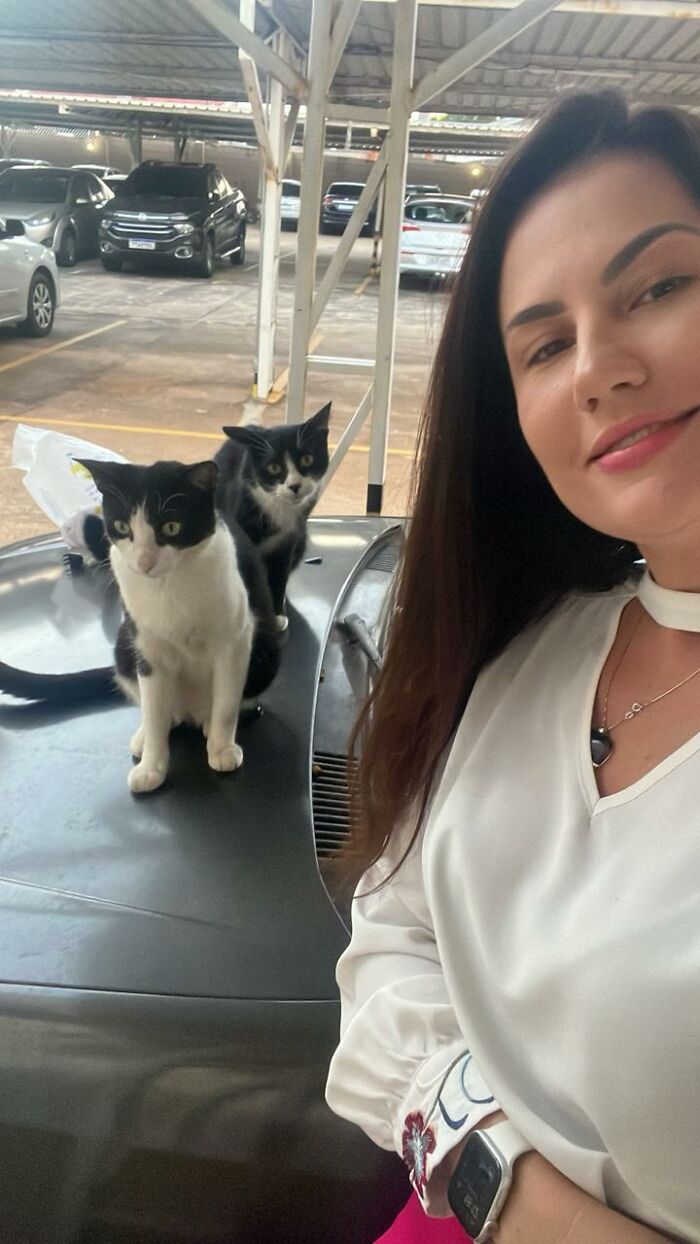
Luxury Interior Shot: Blankets, Cozy Corners.
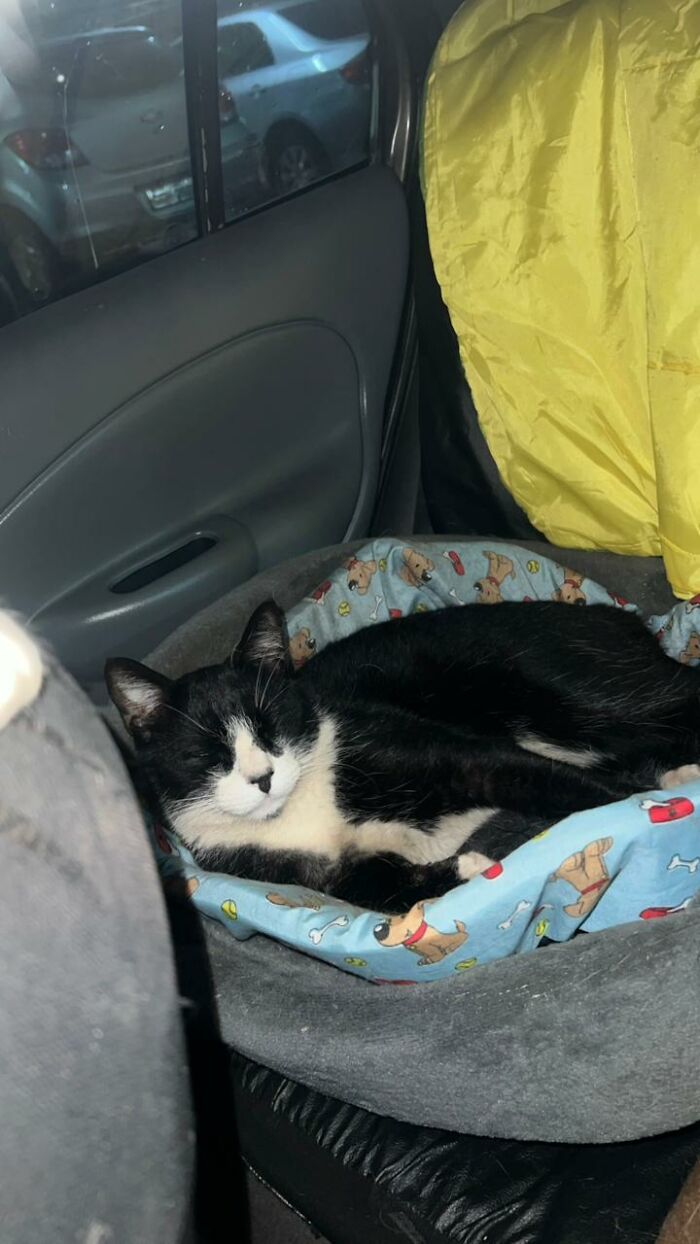
Animal welfare advocates, including Dr. Julie Levy, recommend that pet owners spay or neuter their pets to prevent unwanted litters that contribute to the stray population. In addition, they emphasize the importance of responsible pet ownership.
Dr. Levy suggests that communities can establish low-cost spay/neuter clinics to make this process more accessible. Educational campaigns can also raise awareness about the benefits of spaying/neutering, ultimately reducing the number of homeless cats.
By addressing the root causes of the stray cat crisis, communities can create more effective and sustainable solutions.
According to Aninha, the Residents Like the Cats.
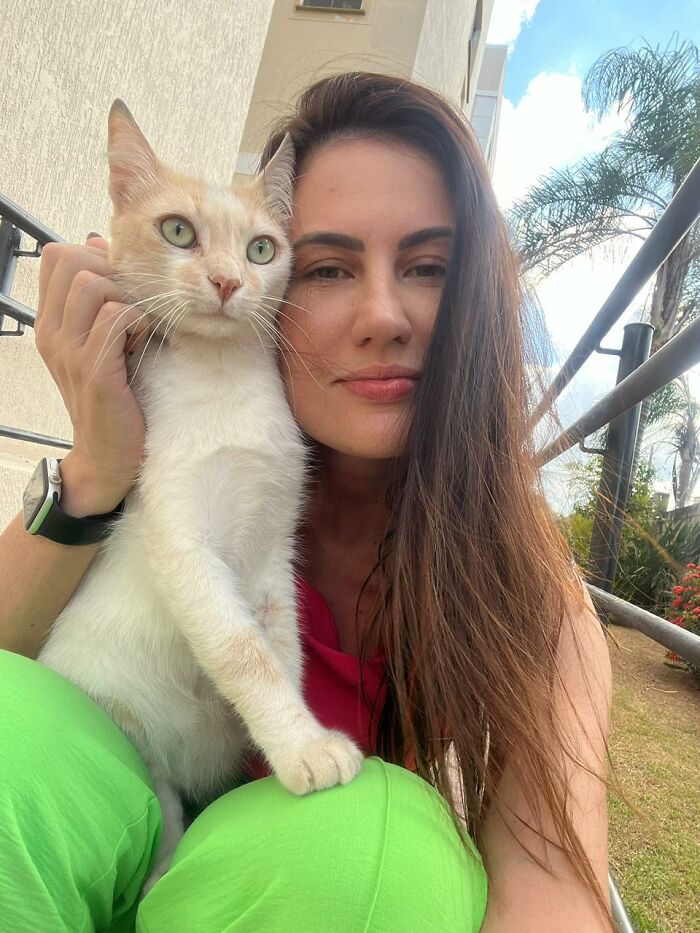
The story spread quickly once photos of the “cat car” appeared on social media. Users praised Aninha for her creativity and compassion, calling her solution one of the most heartwarming things they’d seen in a while.
For her, though, it wasn’t about attention or praise. It was simply about doing what she could with what she had.
“The car has become their home, and I take care of them every day,” she said.
“We’re their only chance to have at least the basics: a roof and food. Before they came here, life on the street was really hard for them.”
Everyone Online Seems Thrilled.
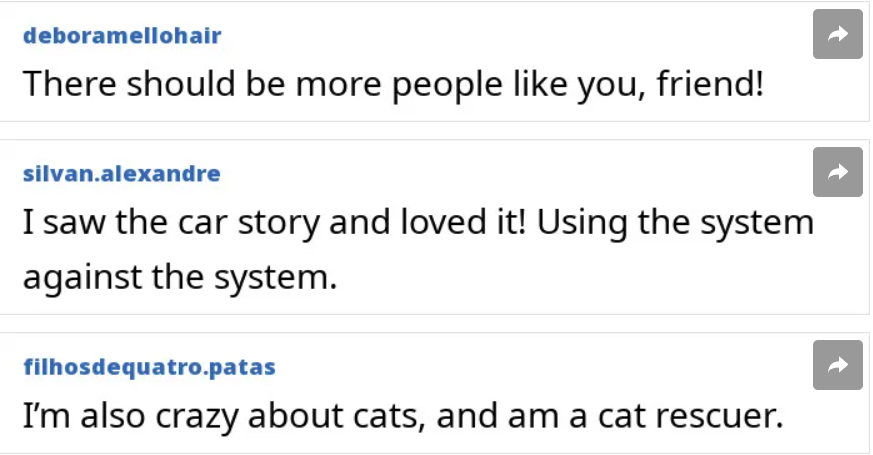
Social Media Users Can’t Get Enough.

The Role of Local Government
Local governments play a crucial role in managing stray populations. Experts like Dr. T. Colin Campbell, a nutritionist and advocate for animal welfare, argue that municipalities should create policies that support humane treatment of strays.
Policies could include funding for TNR programs, educational outreach, and partnerships with local animal welfare organizations. This collaborative approach can help mitigate the issues surrounding stray cats while enhancing community engagement.
By prioritizing humane strategies, local governments can foster a culture of compassion, ultimately benefiting both animals and residents.
Today, the car sits quietly in the corner of the garage, a little shelter that hums with content purring instead of an engine. What started as an act of worry turned into an example of simple, practical kindness.
It shows that sometimes helping animals doesn’t require a big organization or a lot of money—just a bit of thought, effort, and the will to do something when others don’t.
Building Healthier Patterns
The innovative approach taken by this woman not only highlights the importance of caring for stray cats but also opens the door to broader community engagement. Experts like Dr. Julie Levy stress that collaborative efforts can lead to effective solutions for stray populations.
By combining initiatives like TNR, educational outreach, and public involvement, communities can create a safe and compassionate environment for both animals and residents. As we foster awareness and responsibility, we can ensure that no animal is left without care.
